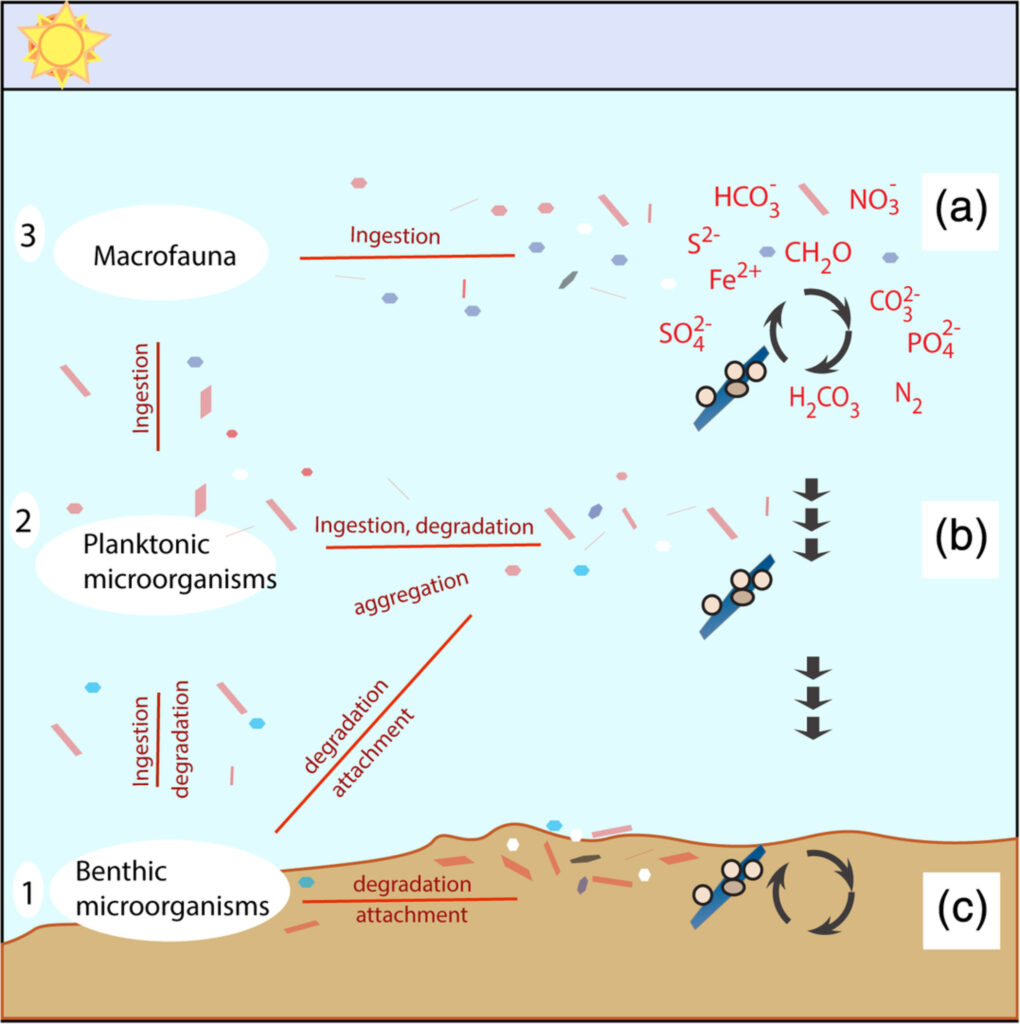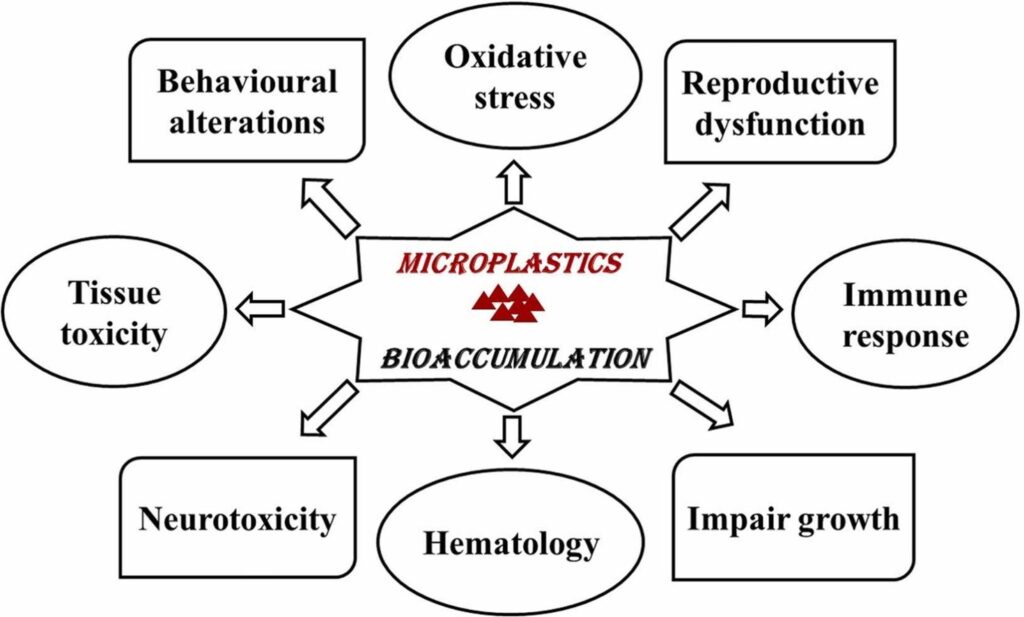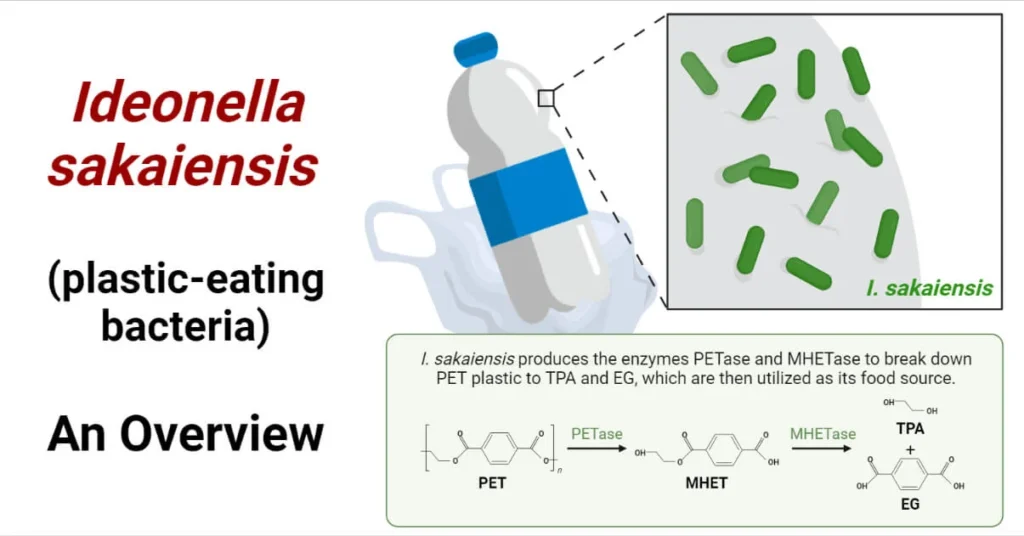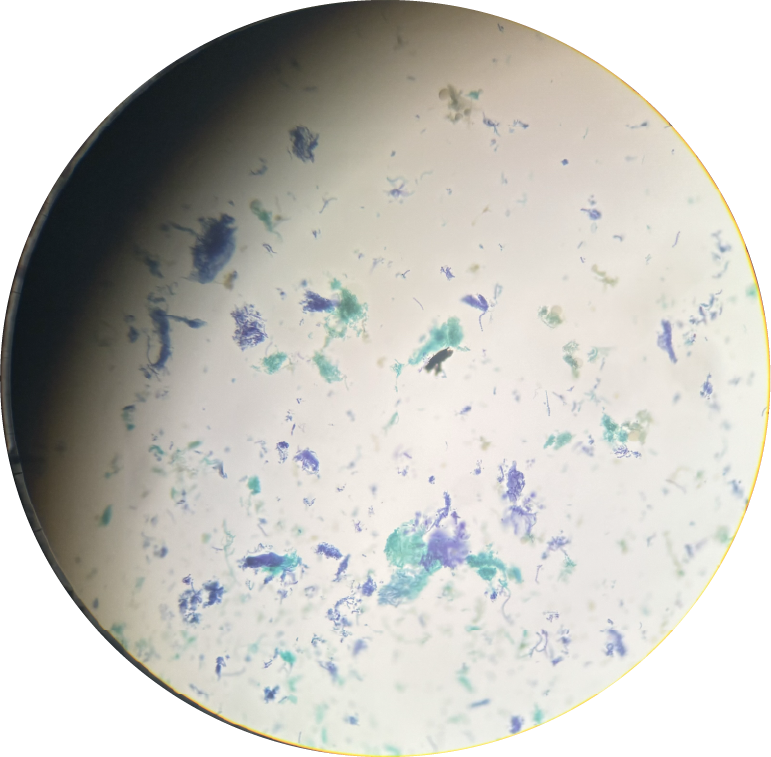Did you know that recent have studies found evidence of microorganisms capable of breaking down microplastics in marine environments?
Marine Biologists across the globe have been studying the issue of microplastics in the environment. Recent studies have found that various marine microorganisms are able to perform biodegradation to microplastics after being degraded by the environment. Biodegradation is the process that breaks down plastic particles by microorganisms, typically in the size range of less than 5 mm, which are considered microplastics, as shown in Figure 1. The degradation of plastic material in the ocean takes a very long time, often hundreds of years, usually facilitated by environmental abiotic factors such as sunlight/ultraviolet light, pH, salinity, temperature, heat, moisture, and exposure to oxygen in the air. Microorganisms capable of biodegradation create biofilms, a coating of microbes over the surface of microplastic polymers, which are effective at deteriorating the microplastic polymers using enzymes. Microplastics that can be degraded by microorganisms through biodegradation can help speed up the process, but the breakdown of plastics will still take a while, on the time scale of decades.

Microplastics and other plastic pollution causes major issues in marine environments. The main concern for small macroplastics and microplastics is bioaccumulation, the process of how chemicals or particulates gather in organisms through continuous predation when going up the food web. Bioaccumulation of microplastics in particular can disrupt the function of marine organisms in multiple ways, as shown in Figure 2. Marine organisms can also bioaccumulate over time from continuous exposure to microplastics, resulting in high levels of these harmful pollutants like microplastics in all or nearly all marine organisms at this point in time.

Discovery of microorganisms that could utilize microplastics to change the structure of the plastic polymers, breaking down the microplastics much more quickly, has also led to some researchers looking into genetic modification. In one study, geneticists were able to genetically engineer Vibrio natriegens, a fast-growing salt tolerant marine microorganism found in freshwater and saltwater environments, to contain a section of DNA called a plasmid from Ideonella sakaiensis which has enzymes that can break down microplastics, as shown in Figure 3. This successful genetic engineering has proven that some microorganisms can start to break down microplastics quicker than abiotic degradation alone, but even in a fast growing microbe like Vibrio, complete biodegradation of microplastics would take around 24 years total.

While biodegradation can help reduce microplastics, there is still a major concern for plastic pollution in marine environments, as shown in Figure 4. Luckily, there are steps to take to reduce plastic pollution, and therefore microplastics, that are in the environment, particularly in marine environments, starting at the macro level. Picking up any garbage, especially plastic waste, and throwing it away or recycling it as appropriate when found as litter is one step to helping the environment. Reducing the amount of single-use plastic items and finding reusable alternatives to single-use plastic also decreases the plastic waste being produced. Recycling whenever possible so plastic doesn’t even reach the ocean is incredibly important to reduce plastic pollution as well.

By taking steps to reduce the plastic waste that pollutes marine environments, macroplastics are less likely to persist in the ocean, and microplastics can be reduced so there’s less bioaccumulation of microplastics in marine organisms. Furthermore, microplastics can be degraded by marine microorganisms, as proven by several recent studies, but this biodegradation still takes a long time to complete. Reducing both macro and microplastics will help save the environment, where biodegradation in marine environments has become possible to break down marine microplastics.
References:
Featured Image by Simcha Schnee (author)
Bajt, O. (2021). From plastics to microplastics and organisms. FEBS Open Bio, 11(4). https://doi.org/10.1002/2211-5463.13120
Dahal, P. (2022, September 8). Ideonella sakaiensis (plastic-eating bacteria)- An Overview (S. Aryal, Ed.). Microbenotes.com; Microbe Notes. https://microbenotes.com/ideonella-sakaiensis-plastic-eating-bacteria/
Ghosh, T. (2024). Microplastics bioaccumulation in fish: Its potential toxic effects on hematology, immune response, neurotoxicity, oxidative stress, growth, and reproductive dysfunction. Toxicology Reports, 14, 101854. https://doi.org/10.1016/j.toxrep.2024.101854
Li, T., Menegatti, S., & Crook, N. (2023). Breakdown of polyethylene therepthalate microplastics under saltwater conditions using engineered Vibrio natriegens. Aiche Journal, 69(12). https://doi.org/10.1002/aic.18228
Rogers, K. L., Carreres‐Calabuig, J. A., Gorokhova, E., & Posth, N. R. (2020). Micro‐by‐micro interactions: How microorganisms influence the fate of marine microplastics. Limnology and Oceanography Letters, 5(1), 18–36. https://doi.org/10.1002/lol2.10136
Thushari, G. G. N., & Senevirathna, J. D. M. (2020). Plastic Pollution in the Marine Environment. Heliyon, 6(8). https://doi.org/10.1016/j.heliyon.2020.e04709
U.S. National Science Foundation. (2023, October 26). Genetically modified bacteria break down plastics in saltwater. NSF – National Science Foundation. https://www.nsf.gov/news/genetically-modified-bacteria-break-down-plastics-saltwater
US EPA. (2023, July 15). About Plastic Products and Plastic Pollution. Www.epa.gov. https://www.epa.gov/plastics/about-plastic-products-and-plastic-pollution
US EPA. (2024, March 28). What You Can Do to Reduce Plastic Waste. Www.epa.gov. https://www.epa.gov/plastics/what-you-can-do-reduce-plastic-waste
Zhai, X., Zhang, X.-H., & Yu, M. (2023). Microbial colonization and degradation of marine microplastics in the plastisphere: A review. Frontiers in Microbiology, 14, 1127308. https://doi.org/10.3389/fmicb.2023.1127308
